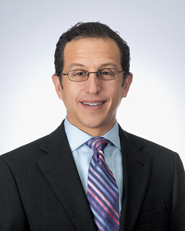Should brokers be required to convert their customers’ market orders into limit orders? As part of a discussion among brokers over risk management practices that has been ongoing since the ‘flash crash’ of May 2010, an industry group is considering issuing guidelines that would do just that.
The idea has won favor with some brokers but not all.
FIX Protocol Limited, a pan-industry group that promotes and supports electronic trading through the ubiquitous FIX communications standard, is in the process of finalizing a set of order-handling guidelines. Included in a long list of recommendations over how to mitigate risk is one directing brokers to convert all incoming market orders into limit orders.
The guidelines are being crafted with the input of about a dozen of the industry’s largest brokers. They apply to orders dropped into algorithms or direct market access mechanisms, and not necessarily to those handled by sales traders.
A first draft was issued earlier this year. The second draft is currently under review. The idea of banning market orders has not been fully vetted by the working group responsible for the guidelines, and could still get revised or dropped altogether from the final document.
"We strongly support this proposal," said Dan Mathisson, head of electronic trading at Credit Suisse, which has been involved in drafting the guidelines. "It would lead to a safer and more robust market."
Many brokers, especially those handling institutional orders, already restrict their usage of market orders and often convert them into priced limits. The concern is that an open-ended market order could fill at an unfavorable price.

Credit Suisse’s Advanced Execution Services desk, for instance, of which Mathisson is the head, takes all incoming market orders and puts a limit on them that is 2 percent away from the last sale.
If AES receives a market buy order, for example, when the last sale was $50, AES would send a buy limit into the marketplace at $51. That way the customer would pay no more than $51 for the stock even if the price spiked.
Other brokers may convert their market orders into limits that are a penny or two away from the national best bid or offer.
Practices also may vary depending on the firm, the size of the order and market conditions, sources say. If the order is for 100 shares of a very liquid stock, then a market order may be appropriate. If the order is for one million shares, then a limit would likely be advisable.
"You don’t want to move the stock," noted one trading executive. "Depending on the size of the order, it may be more prudent to use a limit price-perhaps 5 percent. You know you will get filled, but you won’t take the stock up or down."
The downside to automatically converting market orders into limit orders is that the order may not get executed. That could cost the broker. He may have to make up the difference to the customer between the fill price and the price at which the customer believes he should’ve been executed.
That’s not a problem for Mathisson. The exec contends that the risk of missing the trade is much lower than the risk inherent with a market order. "That risk is well worth it," he said. "It is very rare for a stock to move more than 2 percent within a fraction of a second. And it saves you from potentially very large errors."
Despite the favorable odds, the issue of automatically converting every order into a limit is not cut-and-dried. Most orders dropped into algos and smart-order routers, for example, are automatically converted into limits. On the other hand, orders done through DMA systems may go out as market orders.
Some brokers contend that because institutional orders are handled on a best efforts basis, brokers "implicitly have latitude to do what they need to do to get best execution," one trading exec said.
Others maintain that they follow their institutional customers’ instructions to the letter. If the client submits a market order, then the broker will send out a market order.
"We will accept market orders," Tim Furey, chief operating officer at Goldman Sachs Electronic Trading, said. "And they will stay market orders if that is the client’s intention. So market orders do exist electronically."
Furey adds: "There has been a lot of debate around market orders. Do you automatically put a limit on it? Clearly that is not completely accepted by the buyside." Still, orders worked by algorithms and smart order routers at Goldman are sent out as limit orders.
Whether an outgoing order is a market order or a limit order, according to Furey, Goldman will monitor its performance. If it is determined the order is creating too much market impact, Goldman staffers will have a conversation with the client over whether or not to alter their strategy. A market order could be converted to a limit at that point, Furey said.
In general, money mangers are using fewer market orders, according to Furey. That has become especially true given the uptick in volatility experienced since August. "We’re seeing an increasing number of clients moving away from market orders and using limits," Furey said.



